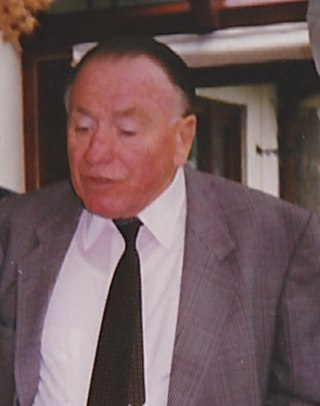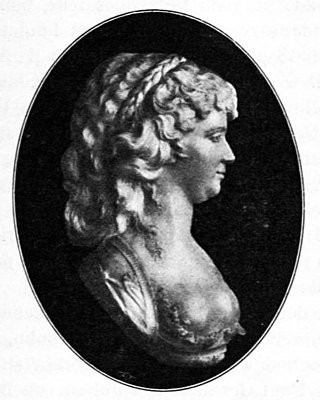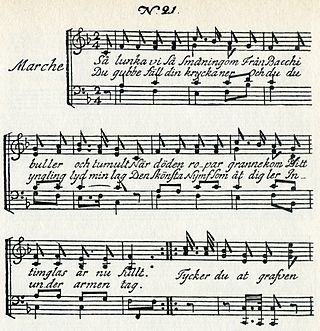This article contains information about the literary events and publications of 1786.

Royal Swedish Opera is an opera and ballet company based in Stockholm, Sweden.

Louis Jean Desprez was a French painter and architect who worked in Sweden during the last twenty years of his life.

The Royal Danish Orchestra is a Danish orchestra based in Copenhagen. The Danish name for the orchestra indicates its original function as an ensemble geared to supplying the music for court events. The Royal Danish Orchestra presently consists of around 100 musicians. The principal venue for the orchestra's traditional symphony concerts is the Copenhagen Opera House, where the orchestra also serves as the orchestra for the Royal Danish Opera, as well as holding several annual chamber orchestra concerts in the foyer of the smaller experimental stage Takkelloftet. Most ballet and some opera performances take place at the Old Stage of the Royal Danish Theatre.
Naumann is a Central German variation of the surname Neumann. Notable people with the surname include:

Bruno Hoffmann was a German glass harpist. Hoffmann is widely acknowledged as the virtuoso who reanimated contemporary interest in the glass harp and glass harmonica.

Johann Gottlieb Naumann was a German composer, conductor, and Kapellmeister.

Caroline Frederikke Müller née Halle also known as Caroline Walther, was a Danish and later naturalized Swedish opera singer (mezzo-soprano). She was also active as an instructor at the Royal Dramatic Training Academy. She was a member of the Royal Swedish Academy of Music and a Hovsångare.

Marie Louise Marcadet née Baptiste was a Swedish opera singer and a dramatic stage actress of French origin. She was active in the Royal Swedish Opera as a singer, and in the Royal Dramatic Theatre and the French Theater of Gustav III as an actress. She was a member of the Royal Swedish Academy of Music from 1795.
Giovanni Bertati was an Italian librettist.

Christoffer ChristianKarsten was a Swedish opera singer. He was the maternal grandfather of the ballerina Marie Taglioni.

Sofia Franziska Stading was a Swedish opera singer of German origin. She is referred to as one of the more notable opera singers in Sweden during the Gustavian era. She was a Hovsångare and member of the Royal Swedish Academy of Music from 1788.

Selma Ek was a Swedish operatic soprano who had an active international career from the 1870s through the 1890s. Like Lilli Lehmann and Lillian Nordica, she was one of those universally talented singers of the late 19th century who was able to master roles from the coloratura, lyric, and dramatic soprano repertoires. The leading Swedish soprano of her day, she was particularly admired for her portrayals of Mozart, Wagner, and Verdi heroines.

The Teatro Donizetti is an opera house in Bergamo, Italy. Built in the 1780s using a design by architect Giovanni Francesco Lucchini, the theatre was originally referred to as either the Teatro Nuovo or Teatro di Fiera. The first opera to be mounted at the theatre, Giuseppe Sarti's Medonte, re di Epiro, was in 1784 while the opera house was still under construction. The official opening of the house, under the name the Teatro Riccardi, did not occur until 24 August 1791 with a production of Pietro Metastasio's Didone abbandonata set to music by multiple composers, including Ferdinando Bertoni, Giacomo Rampini, Johann Gottlieb Naumann, Giuseppe Gazzaniga, and Giovanni Paisiello.
La passione di Gesù Cristo is a libretto by Pietro Metastasio which was repeatedly set as an azione sacra or oratorio by many composers of the late baroque, Rococo and early classical period.

The Conquest of Stockholm was a battle in the Swedish War of Liberation that took place in Stockholm, Sweden on 17 June 1523. The Swedish forces had for a long time laid siege to Stockholm, which was the last Danish stronghold in Sweden. The city waited for reinforcement from Denmark, but none came.

Events from the year 1782 in Sweden

Masonic music has been defined as "music used in connection with the ritual and social functions of freemasonry." Two major types of music used in masonic lodges are lodge songs, played to keyboard accompaniment before or after meetings, or during meals; and music written to accompany specific masonic ceremonies and events. Because the number 3 and the letter 'B' are of particular significance to freemasonry, music written in the keys of C minor or E flat major, which both involve 3 flats,, in their key signatures has been considered especially appropriate for masonic ceremonial music.

Så lunka vi så småningom is a song from the Swedish poet and performer Carl Michael Bellman's 1791 collection, Fredman's Songs, where it is No. 21. The song, written a few months after the death of his son Eli, is addressed to his hosts at a meal. It makes light of death, while presenting it to each person individually, of high or low rank in society. The refrain sings of a pair of gravediggers discussing whether the grave is too deep, taking repeated swigs from a bottle of brandy.
Ipermestra is an opera libretto by Pietro Metastasio first set by Johann Adolph Hasse 8 January 1744, and in the November of the same year by Christoff Willibald Gluck.















